You will find many sites with directions on turning your Polaroid into a pinhole, most of them complicated. Again with the lazy thing, I went the easy route. Non-folding Polaroids are very cheap...anywhere from $2-$5 US. They usually look something like this:

This is my keeper, actually constructed from a couple different Polaroids, but they all look about the same. So how to make it into a pinhole? See that front part, with the lens, flash and shutter release? Rip that part off. Well, actually, you will find screws inside under the battery holders from the back. If you're lucky, there are screws and not little bolt things. Good luck getting the bolt things off. I'd just go get another Polaroid and check the inside before you buy it. The screws can be a pain sometimes, too. Just remember you don't need that front part, so as long as you don't crack the case, do your best to rip it off. After the front is gone, you will see a big opening. I used a piece of black matt board, cut it to cover the hole completely, and cut a small square dead center, about 1/2 and inch on each side. Now get some black tape and tape the hell out of it, attaching the board to the front of the camera. Leave the little square on the front open. This is where the pinhole goes. It will end up looking something like this after you tape your pinhole on the front. Notice the small piece of black tape on the front. This is your shutter. The silver underneath the tape is the pinhole.

The first few shots I took, I used a pinhole that came with a 35mm pinhole camera I bought. Waaaay to small. This was exposed for I think 35 minutes, with a light shining on it.
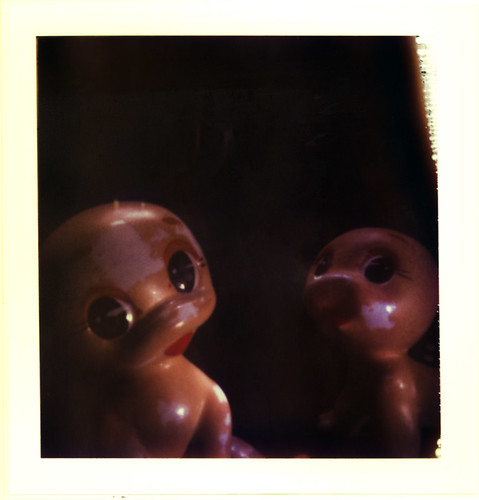
Pinholes are fixed focus, with everything being in focus, so it's an acceptable solution for macro Polaroids. This guys are about an inch tall. This was a perfect pinhole, so the detail is very high, also. Still, for me, 35 minutes is way to long. Plus it took like four Polaroids to figure out the ideal time. In comes the aluminum foil and sewing needle. There are actual charts and instructions that tell you how to make a perfect pinhole and what each needle size is. I just cut out a piece of foil and poked a hole in it, taped it to the camera and stuck the shutter tape on top. Being a much larger aperture than the professional pinhole, the exposure times are MUCH less. Anywhere from 5 to 20 seconds, depending on available light. This was exposed for 15 seconds. It's actually a scan of the goop side, just because I liked it better.
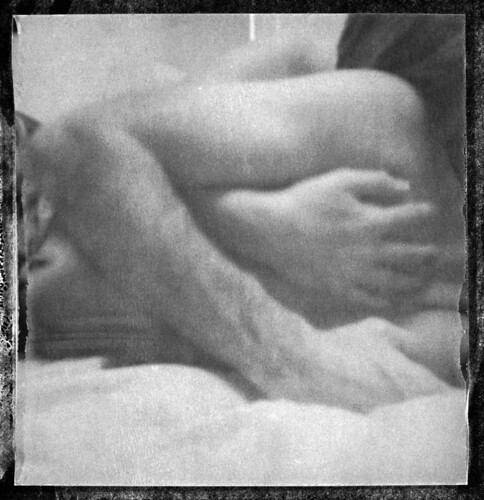
This was around 20 seconds. Probably a bit overexposed. You see a huge difference in the amount of detail, because my foil pinhole is very ragged and has the hanging bits sticking out of the back. Might not seem like much, but every little glitch is magnified onto your film.
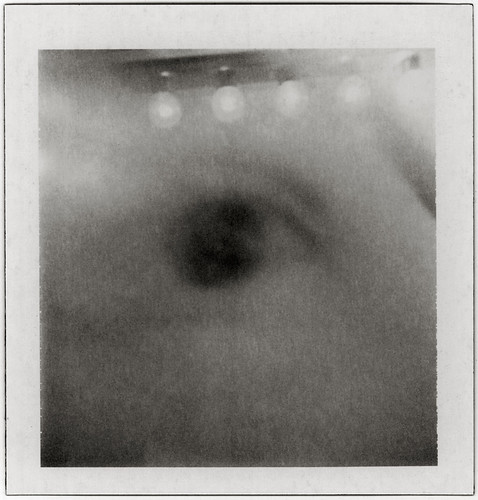
A pinhole alone is a lonely pinhole. So I poked three pinholes in a small triangle formation. The exposure times are really, really short. If you are outside, it's peel the tape off and stick it back on. Less than a second. Inside, maybe five seconds in low light. The image is much fuzzier and you get multiple images on your print. A slight kaleidoscope effect.

It's easy to overexpose and you also get much more grain. The three pinhole effect is almost like ripples on water. These images required some tweaking in photoshop, as they were very faint on the prints.
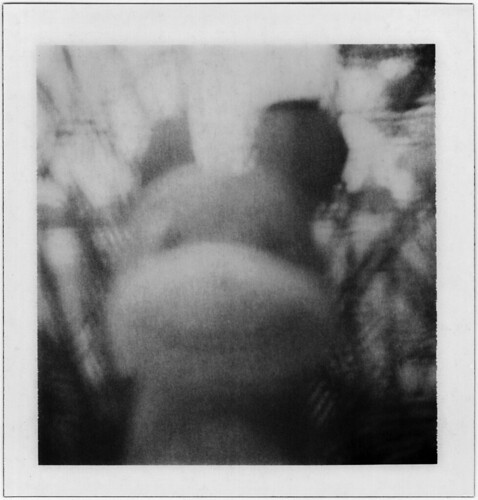
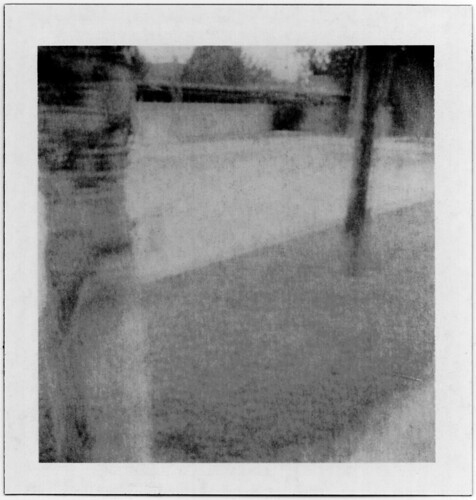
Sure, Polaroid film costs more than regular film, but the trade off is worth it for the immediacy and effects.

No comments:
Post a Comment